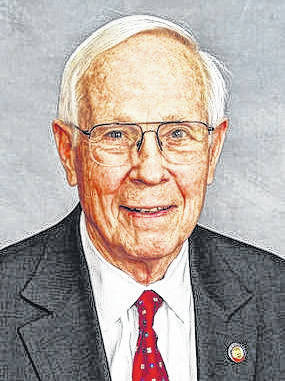Relationship has
spanned 28 years,
highlighted by a
student-exchange
LAURINBURG — On May 12, 1993, the Sister City Agreement between Oban, Scotland, and Laurinburg became official. Twenty-eight years later, the relationship is still thriving.
Oban is a town in Scotland with a population of more than 24,000 people, and Laurinburg has deep roots of Scottish background, making the Sister City Agreement a perfect match.
Early publicity
An article from Scotland’s own newspaper, Lorn News, that dated back to June 23, 1994, talked about the early days of the Sister City relationship that may interest some local citizens.
The article touched on wide variety of topics about the Sister City relationship and how Laurinburg was viewed, as well as the landscape of Laurinburg, what simple life and freedoms look like here.
The 1994 article from Lorn News read, “Modern Laurinburg is slightly puzzling to the Oban-based visitor. There are sign-posted city limits, but no sharp division between town and country such as we expect here.
“Building plots are extensive, and even the poorest housing area of Laurinburg has a lower housing density than any modern development in or around Oban.”
The article also points out Laurinburg’s extensive amount of main street shops and notes how it is “more reminiscent of an urban shopping area,” as well as the “numerous amount” of churches.
In paragraph two of the article, Laurinburg was actually referred to as “Laurinburgh.” It appears the idea was to make it rhyme with Edinburgh, capital of Scotland, but a mistake was made when printing the article.
There are two parts to this article, with part two going into detail about the importance North Carolina has on agriculture, noting that it is still a very relevant and important to the state, as well as talking about the important history to Scotland High School athletics with the legendary football stadium and how important the legacy of “The Fighting Scots” is to some of the local citizens.
Part two also notes the Scottish names and areas that are in and around the Laurinburg area.
The 1994 article named some local roads in Laurinburg that are Scottish last names, stating,“Scottish place names abound: MacFarland Road and MacArthur’s Crossing, MacKinnon Drive and Appin Road.”
The article also touched on some locals here in Laurinburg who also have Scottish owned last names, stating that, “Look at the local phone book and find a host of Scottish names – MacLaurin, MacInnes, Stewart, MacLucas, Campbell, and others.”
Regarding the Sister City Agreement, the article notes that “people from any profession, hobby, sport, or special interest can find common ground with their sister city counterparts.”
How it all started
In 1990, Dr. Tom Benson who is the former vice-president and dean of St. Andrews University, took a trip to Oban, where he would speak to their Rotary Club and present the idea of Laurinburg becoming a Sister City prospect.
It took three years, but the deal was made official in 1993 during a phone call between Oban leadership and then Laurinburg Mayor Dr. Bill Purcell.
“A lot of people of both cities have played major roles over the years in establishing and continuing the important Sister City relationship between Laurinburg and Oban,” said Purcell.
One of the more important things both cities benefit from this relationship is the annual student-exchange program, when 12 students from Scotland High travel to Oban and, a few months later, 12 students from Oban come to Laurinburg.
Purcell noted that “the program has given students from both cities a much broader view of the world and new friendships.”
The exchange program remains a high-priority for sponsorship by the Laurinburg Rotary Club.
Due to the COVID-19 pandemic, the student-exchange program hasn’t been available for the second consecutive year now.
Another perspective
Laurinburg native Maggie Liles didn’t participate in the student-exchange program as a Scotland High student. But from a young age, Liles was always aware of the student-exchange program.
Although Liles, now an elementary school teacher in Franklin County, didn’t participate in the program, she did have a younger sibling , Sara Paige Gallaway, get involved in 2015. She also had friends who chaperoned the trip.
That inspired her to get involved with the program.
“Witnessing the positive experience my family had with the program and hearing about the life-long friendships and memories made sparked an interest that led to my participation as a chaperone in 2016,” said Liles.
Liles also noted the exchange program has led to her building friendships from people at Oban that she still keeps contact with five years later.
“The students in the program have developed a unique self and global awareness through the social interactions and travel that take place during the experience,” said Liles. “Our community has done a wonderful job supporting the annual exchange fundraisers, demonstrating Scotland County’s desire to maintain the program.”
The 28-year-old sister city relationship has broadened the knowledge of both cities, and the partnership isn’t going anywhere anytime soon == with both communities active with each other up until the pandemic.
“I believe that this special relationship has made both communities better places for citizens of both cities,” said Purcell.
Hunter Locklear is a summer intern from The University of North Carolina at Pembroke.

